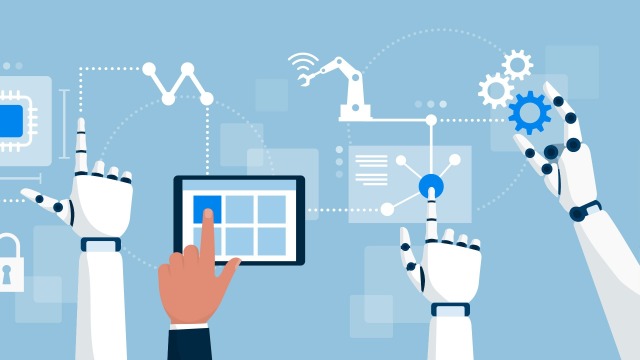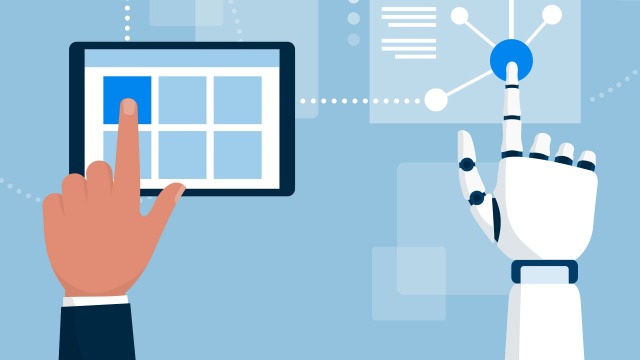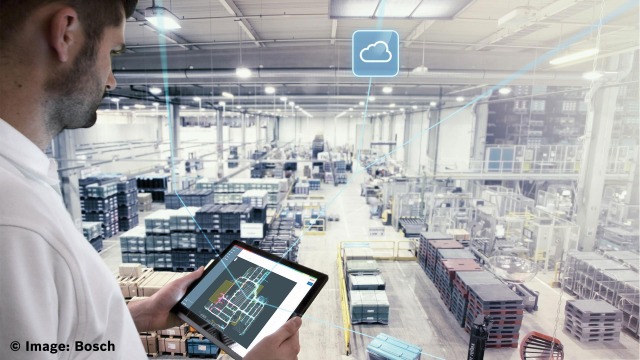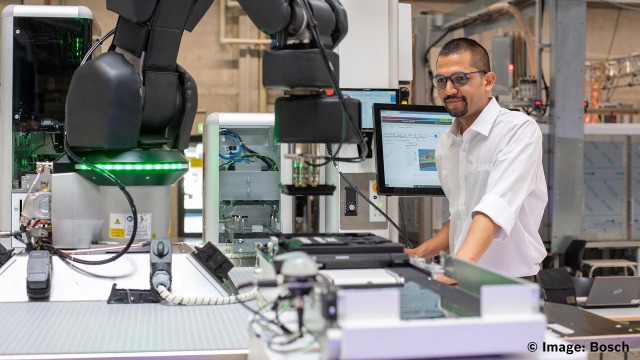

Select your location
Bosch Rexroth around the world
Asia & Pacific
Europe


As we move towards the Factory of the Future, you may, like many people, be wondering what the role of people will be in this new world of sophisticated smart technology. Here, we take a look at manufacturing in the future, the evolving role of the industrial workforce, and explain how people and machines will complement each other.
Throughout history, the manufacturing industry has benefited from and adapted to the changes that technology has brought. From the first industrial revolution when mechanization was powered by water and steam, through the development of production lines using electricity in the second industrial revolution, to the use of electronics and IT to automate production in the third industrial revolution.
Now we come to the present day and the fourth industrial revolution, or Industry 4.0 as it’s often known. So, what does this mean for the manufacturing industry and how will the role of people fit into it?
Our vision of the Factory of the Future offers complete flexibility and variability. The walls, the floor and the ceiling will be fixed, but everything else will be mobile and connected. Assembly lines will be modular, with their constituent machines moving and adjusting according to requirements. Autonomous transport vehicles will deliver components to assembly lines, while manufacturing cobots and assistance systems will work alongside and support workers. All the while, data will be monitored to improve efficiency and performance. There’s no doubt that technology and machines will play an important part in automated production, yet the human workforce will still be at the heart of the factory and control will remain firmly in human hands.


This theory is supported by the International Federation of Robotics, which predicts that less than 10% of jobs are fully automatable and that robots are increasingly used to complement and augment labor activities.
Afterall, people and machines have the perfect balance of abilities and skill sets, making them the ideal team. While people tend to excel at tasks involving creativity, manipulation and perception, these are harder for artificially intelligent machines. Whereas heavy lifting, monotonous repetition of simpler tasks and the calculating of complex data, which tend to be more strenuous for people, are precisely the areas where machines can provide support.
The trend in human-robot collaboration is reflected in a report by the International Federation of Robotics, which found that the number of cobot installations grew by 11% in 2019 in comparison with the previous year.
Collaborative robots in manufacturing provide significant health and safety benefits, taking on the heavy lifting and repetitive tasks that can be harmful to people. Another benefit of modern technology came to light in the pandemic, during which digital solutions enabled supervisors to monitor factory performance remotely and in real time, deploy interventions when needed and adapt plans to meet customer demands – all remotely.
With the Factory of the Future comes exciting new opportunities for the people who work in it – in management, the analysis of big data, planning and decision making. On the factory floor, people will be needed to operate, coordinate, oversee and work alongside machines. And, of course, all this machinery and technology will need to be maintained. Indeed, a broad range of skills and abilities will be required to operate the high-tech factory of tomorrow.


People will still have an important role to play in assembly, and it’s important that technology is used to complement and enhance the modern industrial workforce.
With production processes becoming more varied and complex than ever, our APAS production assistants are a welcome addition to the smart factory and a good example of effective human-robot collaboration. They can be adapted quickly according to requirements – even for small batches from lot size 1 – and don’t require safety fences, so are able to work hand in hand with their human workmates, taking on repetitive and physically demanding tasks.
To deliver materials and goods to the production line, there’s our autonomous transport system, ActiveShuttle. With the demand for more individualized products comes more component diversity. ActiveShuttle provides efficient and fully automated transport of loads, safely navigating around people and obstacles. The management system ensures optimal control of the overall system and more transparency in intralogistics.


With production lines becoming evermore complex, it’s crucial that people have access to all the relevant data in real time, which is where our human-machine interface, ActiveCockpit, comes to the forefront. This open, extendable software solution enables employees on site to react immediately to deviations and initiate optimization measures. It’s another example of how people will control the Factory of the Future, while technology supports and assists them.
Artificial intelligence will, of course, play an increasingly important role in factories. Our smart item picking solution – a self-learning robotic system – will utilize this technology to support labor-intensive picking tasks in the future. Through communication with the warehouse management system, and thanks to the latest AI methods, object recognition is refined for each specific application and the gripping strategy is optimized for each individual pick.

So, how do we take workers into this new technological age? We have to ensure that everyone in a company is on board with the Factory of the Future and the changes it may entail. This is why we’re bringing Industry 4.0 – which can often seem like an abstract topic – down to a manageable, practical level. Using concrete examples and use cases we show what the benefits are – for everyone in a business, from workers through to management.